Table of Content
- What is E-commerce?
- Why Should You be Aware of E-commerce Statistics?
- E-commerce Statistics 2024
- Emerging Trends in E-commerce 2024
- Bottom Line
What is E-commerce?
E-commerce, or electronic commerce, refers to the buying and selling of goods and services over the Internet. In recent years, this digital marketplace has witnessed unprecedented growth, transforming the way businesses operate and consumers shop.
Why Should You Be Aware of E-commerce Statistics?
Strategic Decisions: E-commerce statistics provide valuable insights into market trends, consumer behaviour, and competitive landscapes. Marketers can make informed decisions, e-commerce mistakes to avoid, aligning their strategies with real-time data to stay ahead of the curve.
Understanding User Behavior: Analyzing e-commerce stats enables marketers to comprehend how consumers interact with online platforms, their preferences, and the factors influencing purchasing decisions. This understanding is pivotal for crafting targeted and effective marketing campaigns.
Growth Aspects: By staying updated on e-commerce statistics, marketers can identify emerging markets, consumer segments, and product categories that present growth opportunities. This proactive approach allows businesses to capitalize on untapped potential.
Competitive Edge: E-commerce stats offer a benchmark for assessing a brand’s performance against competitors. Marketers can gauge market share, pricing strategies, and customer satisfaction levels, enabling them to refine their own strategies for a competitive edge.
Optimizing PPC: Understanding e-commerce trends helps marketers optimize their digital advertising efforts. Insights into popular platforms, ad formats, and consumer engagement patterns aid in allocating budgets effectively and maximizing the return on advertising investments.
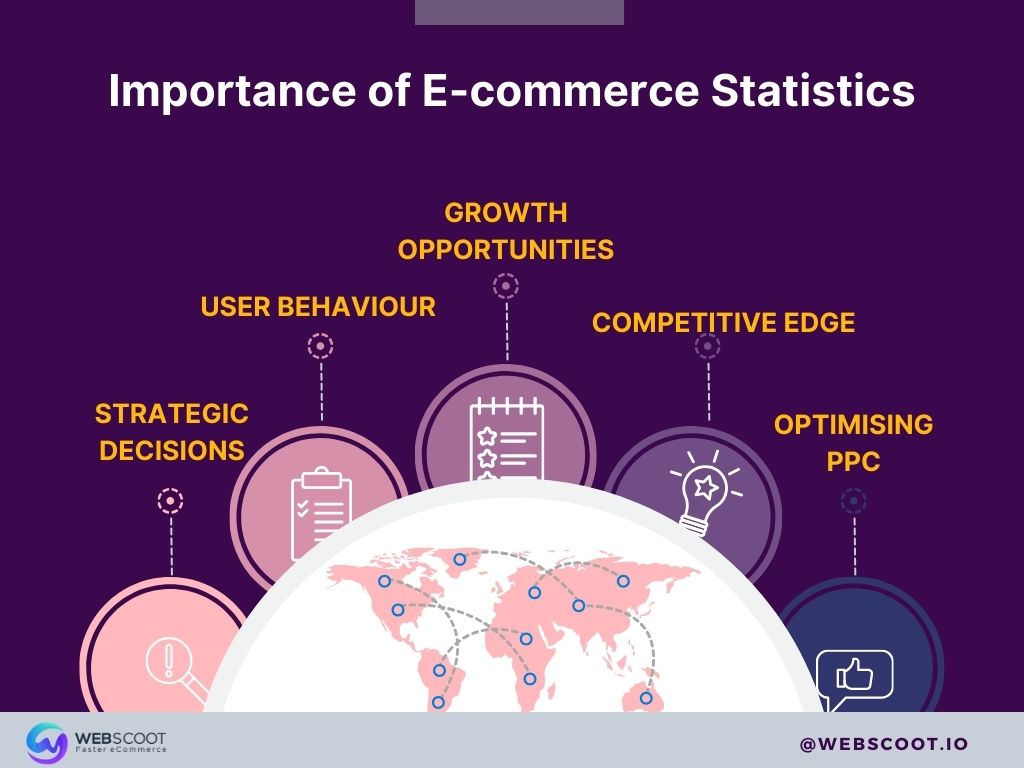
Understanding the current landscape of e-commerce is crucial for marketers aiming to navigate the dynamic online market successfully. It provides valuable insights into consumer behaviours, emerging trends, and strategic areas for business growth.
E-commerce Statistics 2024
Listed below are online commerce statistics that are essential for every marketer. These statistics cover a wide range of projections and forecasts spanning across global growth, mobile e–commerce statistics, stats of B2B e-commerce, etc.
1. Global Growth in E-commerce Statistics and Projections
Report published by ResearchandMarkets.com reveals that the global e-commerce market is anticipated to soar to US$6.07 trillion in 2024, demonstrating a remarkable 11.34% Compound Annual Growth Rate (CAGR) from 2020 to 2024. Key drivers include the Rise in third-party logistics, increased use of mobile wallets, and a growing preference for online shopping among millennials.
2. Online Commerce Statistics Meteoric Rise
In 2021, the landscape of e-commerce as a percentage of retail sales witnessed an impressive surge, exceeding $5.2 trillion in sales. Projections from Statista indicate a monumental leap, with expectations soaring to $8.1 trillion by 2026. This substantial growth emphasises the expanding influence of e-commerce in the global marketplace. Statista’s forward-looking projection for 2026 anticipates that e-commerce will claim a formidable 24% share of the total global retail market. This forecast provides businesses with a powerful tool for strategic planning, offering insights into the segments poised for rapid growth. This projection not only guides planning but also heralds a period of robust expansion for both small enterprises and corporate giants, signalling opportunities for growth across diverse market sectors.
3. E-commerce as a Percentage of Retail Sales
While the global e-commerce market is anticipated to soar to US$6.07 trillion in 2024, consequently 21.2% of e-commerce sales will be a part of retail sales.
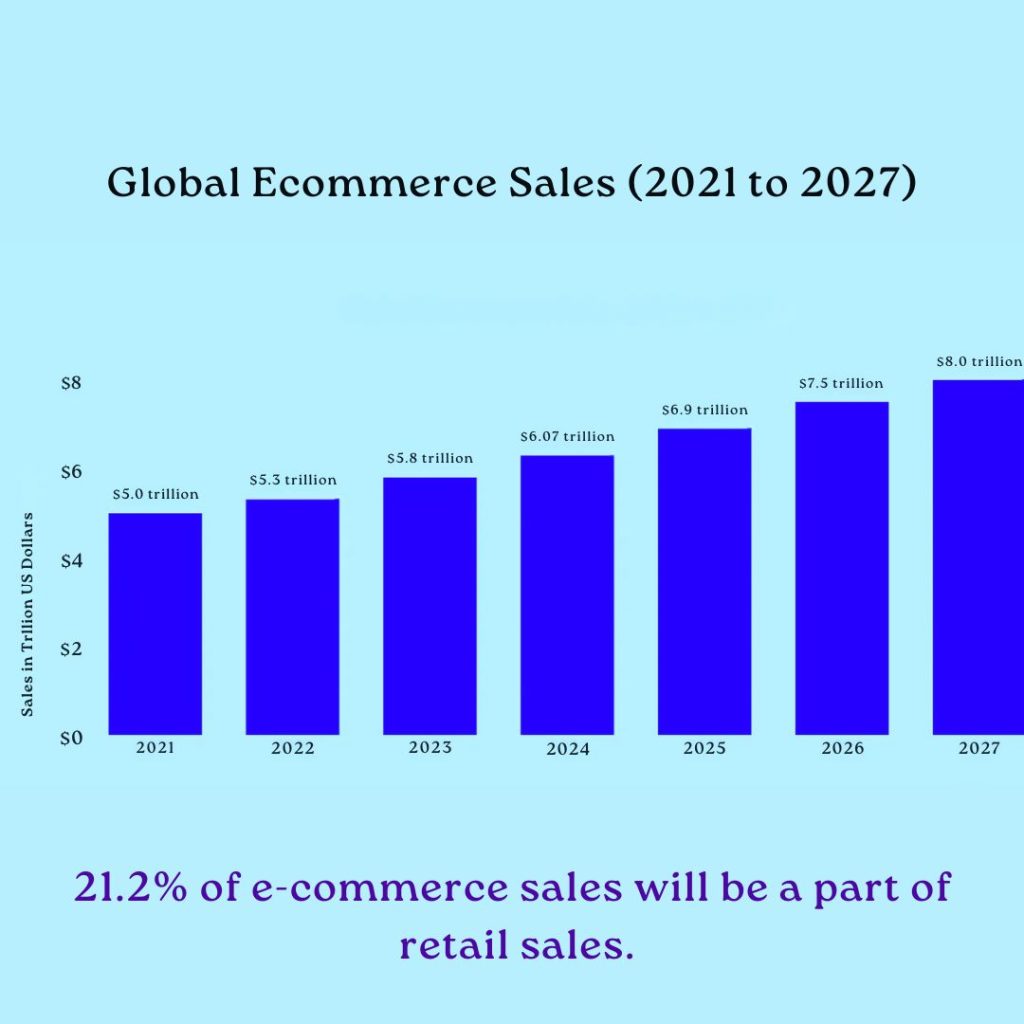
4. Regional Insights of E-commerce Statistics 2024: Brazil’s E-commerce Boom
Brazil leads the world with a staggering 20.73% e-commerce growth rate, fueled by consumer preferences for online purchases and the widespread use of mobile and tablet devices, says Brimco e-commerce stats by country. This e-commerce statistics worldwide upward trajectory is indicative of a sustained expansion in the Brazilian e-commerce landscape. Followed by Argentina, Turkey, Russia and India. South Korea ranks the lowest in the grid.
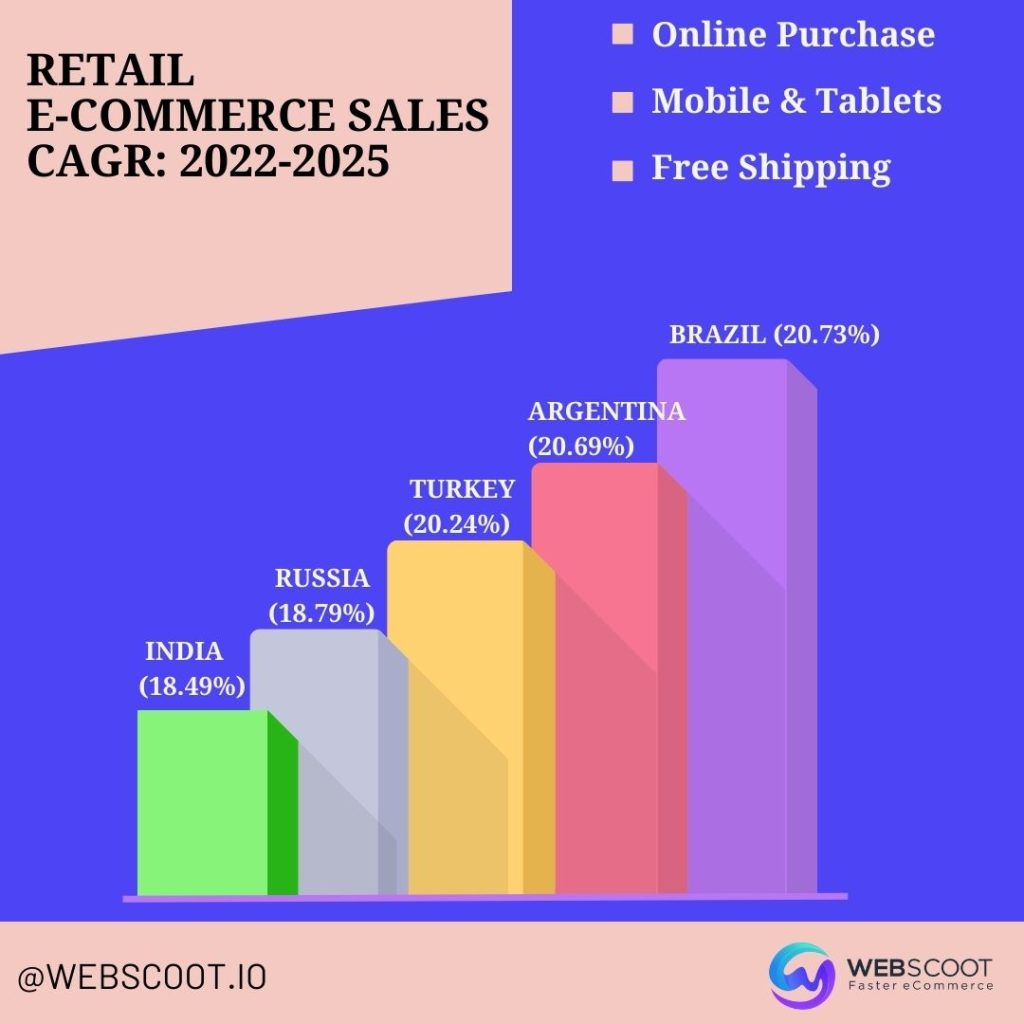
5. Statistics of E-commerce and Retail Media Ad spending
Anticipating a remarkable 22.5% surge in the coming year, retail media ad spending is poised to reach an impressive $55.31 billion in the U.S.A, says the e-marketer report. However, sustaining this upward trajectory demands concerted efforts from both retailers and advertisers. To uphold this burgeoning growth, Retail Media Networks (RMNs) must embrace standardised measurement practices. This proactive step facilitates advertisers in accurately assessing campaign performance across diverse networks and boosting e-commerce traffic growth.
6. Online Shopper Statistics: Decoding Online Shopper Behavior
A recent report by Adobe unveils a pivotal factor driving online shopping decisions—shipping costs. Astonishingly, 53% of online shoppers attribute their purchase choices to shipping policies. The report of abandoned cart stats exposes a harsh reality as well, revealing that a substantial 86% of consumers abandon their shopping carts due to concerns about shipping expenses.
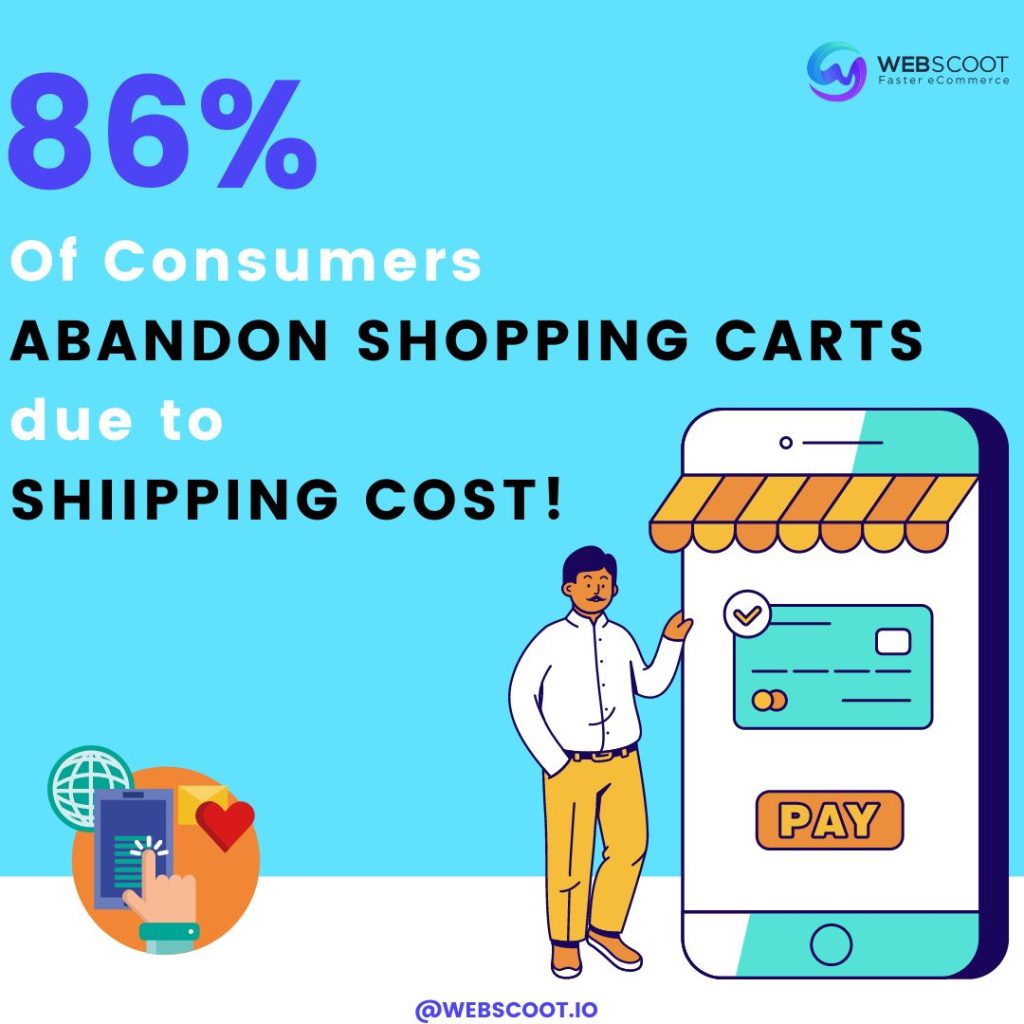
7. Mobile Commerce Statistics: An Unprecedented Rise
Mobile commerce or m-commerce stands out as the fastest-growing retail sector globally. Projections suggest that M-commerce stats 2024 is expected to grow at $604.5 billion, global mobile e-commerce sales could surpass $728.28 billion by 2025, driven by technological advancements, lower entry barriers, and increasing demand for innovative services.
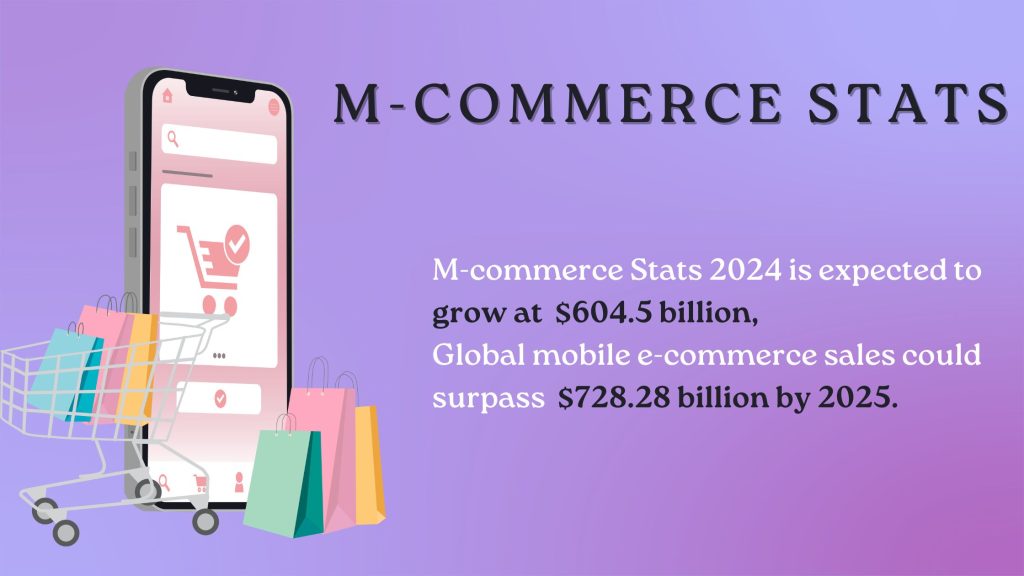
8. B2B E-commerce Stats: A Thriving Sector
Forrester forecasts B2B online sales exceeding $2.3 trillion in 2024, with the potential to surpass $3 trillion by 2027. This growth is influenced by the increasing involvement of Gen-Z and Millennials in the workforce, who prefer online research and purchasing.
9. The Impact of AI & E-commerce Statistics
According to the insights of CXO Today, Incorporating AI-powered returns reduction technology has proven transformative for e-commerce businesses, with a remarkable 89% reporting a significant decrease in return rates. This not only translates to a substantial 15% reduction in return-related costs but also contributes to a noteworthy boost in customer satisfaction, marking a 20% increase.
The burgeoning role of AI in the e-commerce landscape is evident, especially in the realm of chatbots. Valued at $525.7 million in 2021, the market for chatbots is on a trajectory to reach an impressive $3.99 billion by 2030. This substantial growth, averaging about $12 per person in the US, signifies a robust Compound Annual Growth Rate (CAGR) of approximately 25.7%.
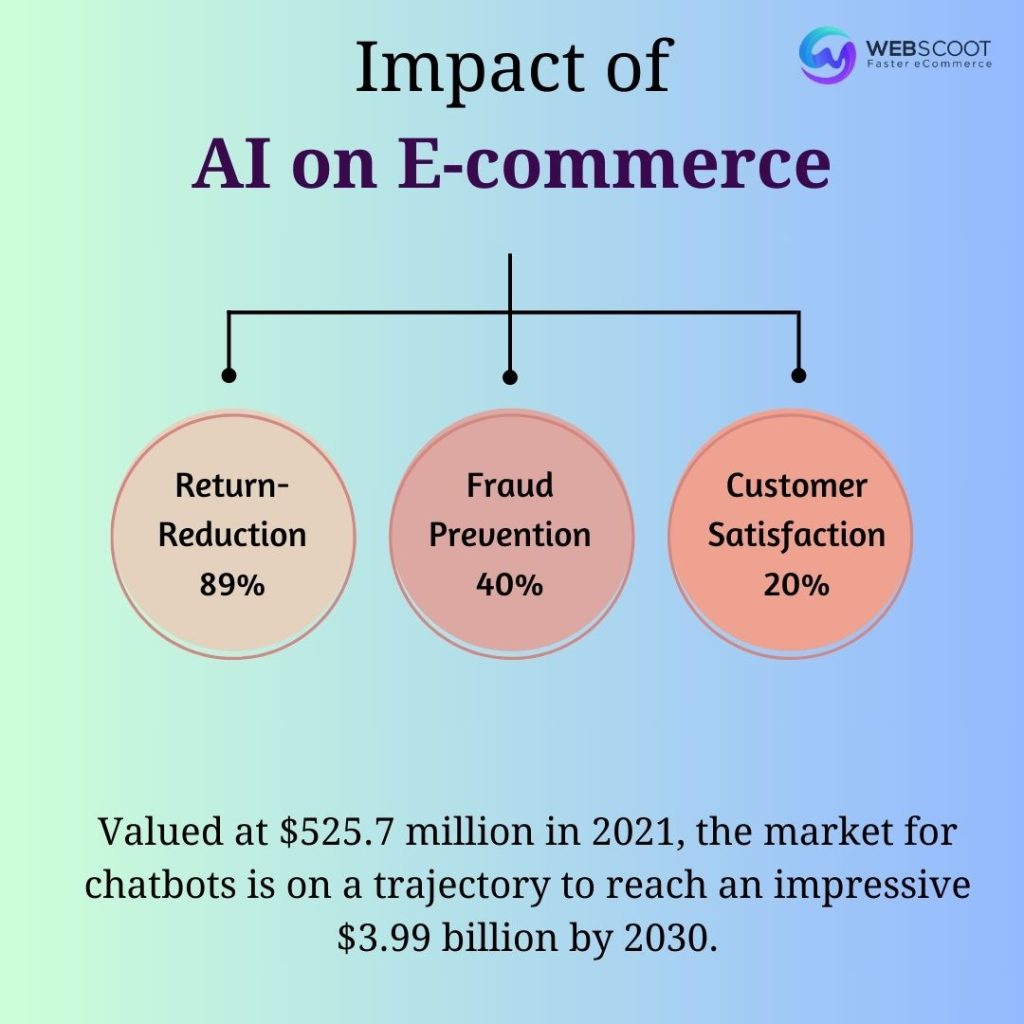
Retailers harnessing AI to detect and prevent return fraud witness a remarkable 40% reduction in fraudulent returns, leading to an average annual savings of $250,000. As e-commerce continues its expansion, the proactive use of AI for fraud prevention is anticipated to see a surge in 2024, emphasising its pivotal role in securing the integrity of online transactions.
10. E-commerce Payment Transactions
Although digital and mobile wallets already account for more than 44.5% of e-commerce transactions globally, debit and credit cards continue to be the most widely used payment methods in markets like the US. Digital and mobile wallets are predicted to handle more than half i.e 50% of all eCommerce transactions globally by 2024.
Emerging Trends in E-commerce 2024
1. Voice-Enabled Devices on the Rise
Forecasts indicate that worldwide sales of voice-enabled devices could surpass $30 billion by 2024, with over 55% of American homes likely to have a smart speaker. Optimising for voice-enabled commerce positions businesses for a future dominated by this trend.
2. Immersive Technologies: AR, VR, and Video Content
Technologies like Augmented Reality (AR) and Virtual Reality (VR) are revolutionising customer engagement by providing immersive experiences. Video content is gaining traction, offering brands a compelling medium to tell their stories and engage consumers in a multimedia experience.
3. Social Media Platforms as Sales Hubs
Social media platforms like Instagram, Facebook, and TikTok are evolving into sales hubs, incorporating features such as shoppable posts and in-app purchasing. This integration provides users with a seamless shopping experience without leaving the social media platform.
4. Q-commerce: Transforming Product Delivery
Quick Commerce (Q-commerce), exemplified by platforms like Amazon Prime Now, is reshaping product delivery with a focus on rapid and convenient services. This trend addresses growing consumer impatience for immediate access to goods, prompting businesses to adapt their strategies accordingly.
5. E-commerce Challenges & Issues 2024
Anticipated challenges in cross-border e-commerce for 2023 and 2024, as foreseen by supply chain experts, include the significant concerns of recession and inflation. Following closely is the second-ranking challenge of shipping costs, with 40% of respondents foreseeing this issue over the next 24 months. Subsequently, concerns about international instability among suppliers emerged as another noteworthy challenge.
Bottom Line
In 2024, the e-commerce landscape continues to evolve, presenting both challenges and opportunities for businesses. Staying abreast of these e-commerce statistics is not merely insightful but imperative for marketers to formulate effective strategies, capitalise on emerging trends, and thrive in the dynamic digital marketplace.
FAQs
1. What are the most recent figures for e-commerce worldwide?
Answer: Sales of e-commerce hit $4.2 trillion in 2020, a considerable rise over prior years. In 2023, the eCommerce market is expected to generate $3,090.00 billion in revenue. By 2028, the market is forecast to have grown to a projected value of US$4,991.00 billion, with revenue expected to rise at a compound annual growth rate (CAGR) of 10.06%.
2. How are e-commerce trends affected by mobile commerce?
Answer: Over 70% of e-commerce traffic originates from mobile devices, indicating the growing trend of mobile commerce, or m-commerce.
3. What impact has the COVID-19 pandemic had on online shopping?
Answer: The epidemic hastened the transition to internet buying, with a discernible surge in e-commerce activity as customers adjusted to social isolation and lockdown procedures.
4. How does social media affect current trends in e-commerce?
Answer: Direct shopping options are being made available on social media sites such as Facebook and Instagram, which is driving up the popularity of social commerce.
5.What are the main challenges and key issues in e-commerce?
Answer: Supply chain interruptions, effective return management, and last-mile delivery are some of the difficulties that e-commerce must overcome.

Jasleen Bhatia has been working as a content writer for 3+ years now. She relishes in learning and honing her skills!

0 Comments